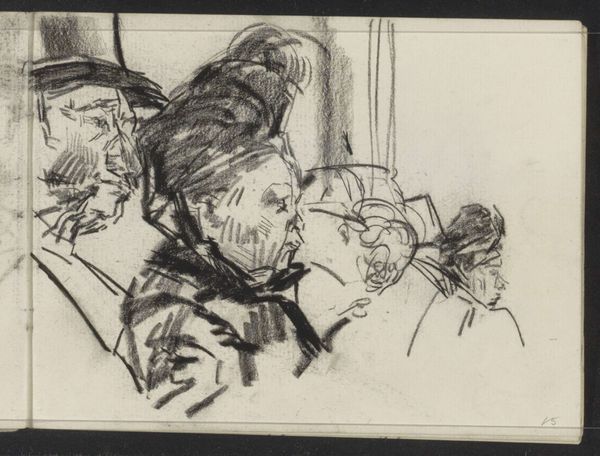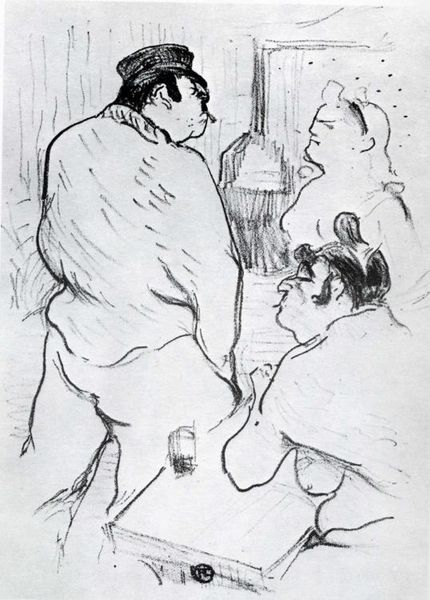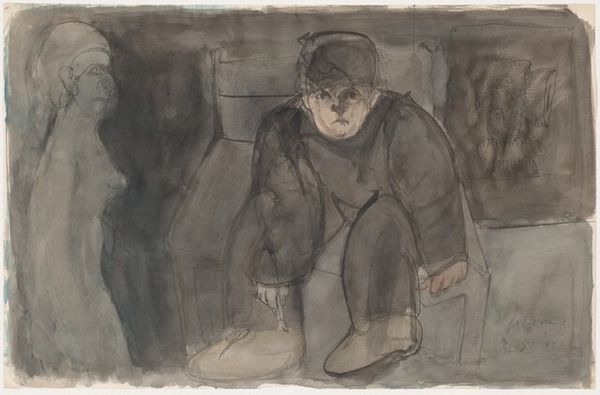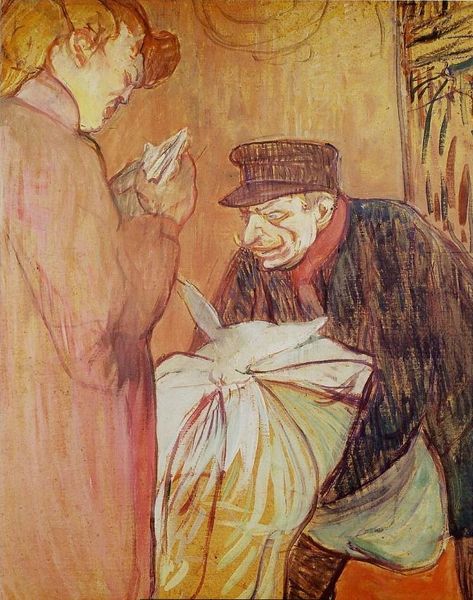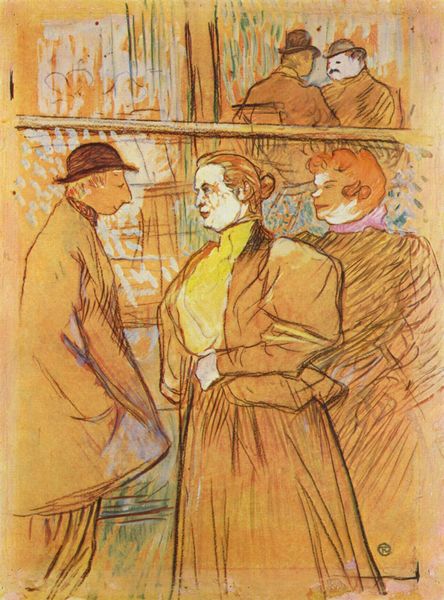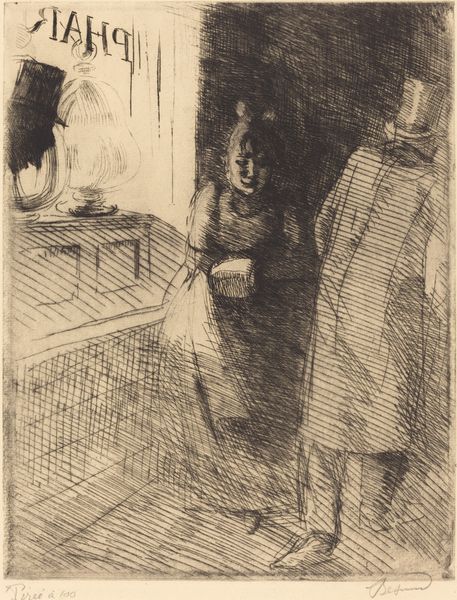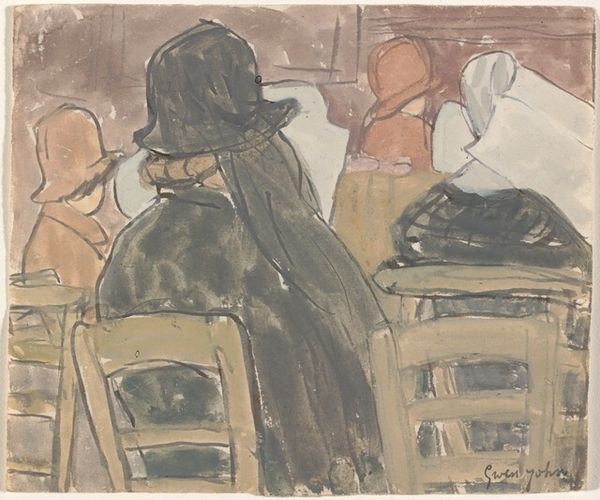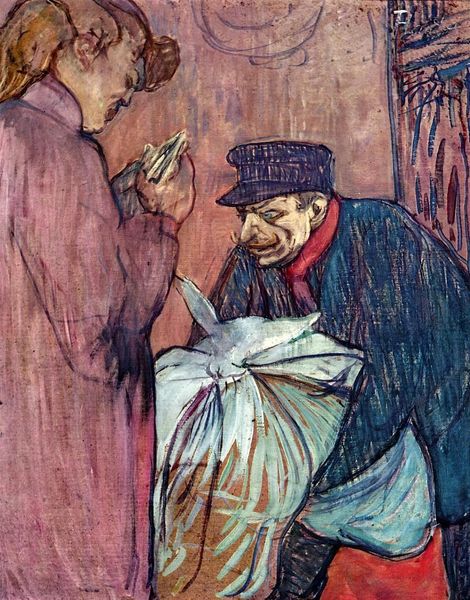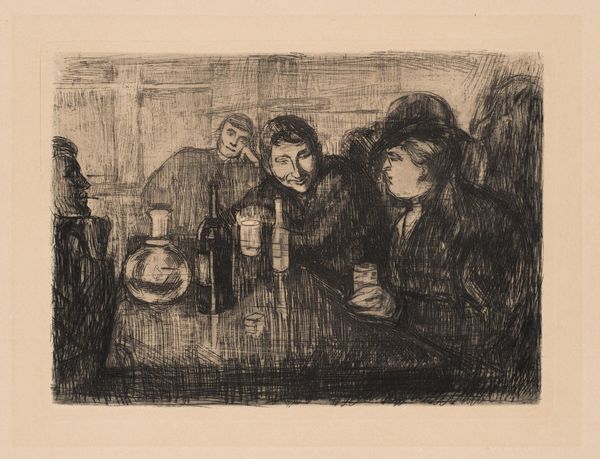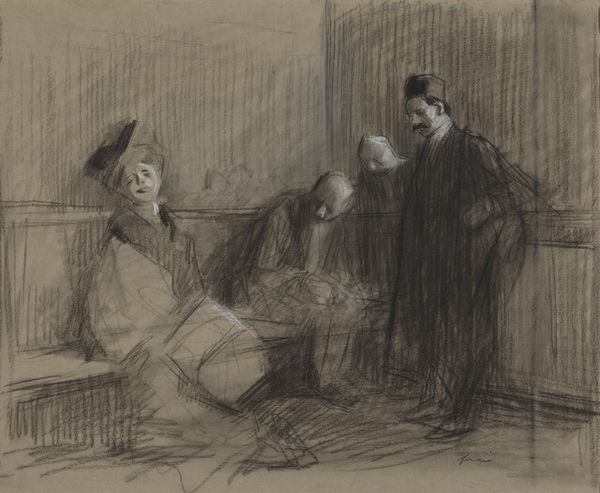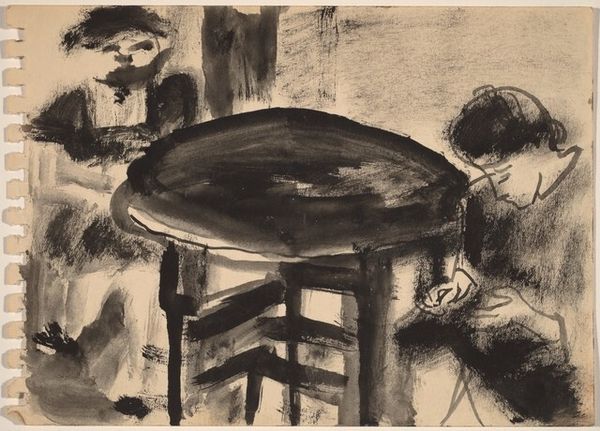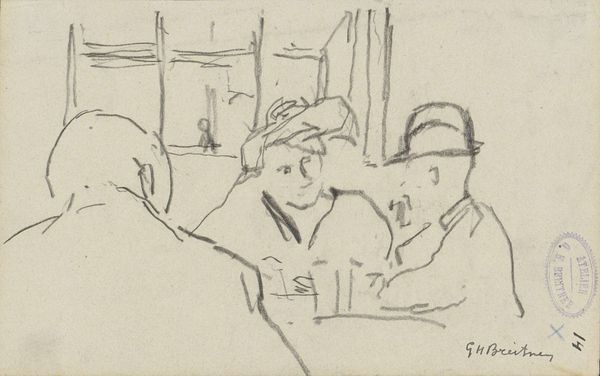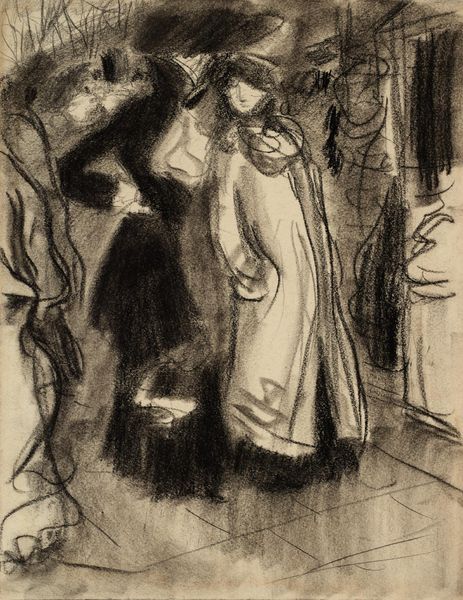
Copyright: Public domain
Curator: Ah, Henri de Toulouse-Lautrec’s “The Bartender,” circa 1900. An intriguing example of his work in charcoal and pastel. Editor: My first impression? Somber. Despite the bustle suggested by the scene, the charcoal work and the muted palette evoke a heavy atmosphere, like the air thick with smoke and unspoken stories. Curator: Absolutely. Toulouse-Lautrec was fascinated by the working class and the demimonde of Paris. This drawing likely captures a fleeting moment within the social ecosystem of a bar, a key space for encountering class and sexuality in Belle Époque France. The very choice of charcoal, an inexpensive and accessible material, speaks to this focus. Editor: I agree. And if you look closely at the figures, you can see subtle symbolism at play. The bartender, a solid, almost imposing figure, stands in contrast to the more ephemeral woman with an elaborate updo lurking in the background. There is an intriguing play of archetypes, here perhaps exploring societal roles of women and those in positions of service. Note also that almost hidden in the right corner is an obscured signature. It's very common for an artist of that era to inscribe their name on works, often incorporating this self-referential signature to solidify his position as creator of these worlds. Curator: Fascinating. Toulouse-Lautrec was certainly concerned with documenting the processes of nightlife; what materials are served, who the audience may be, how they were consumed... These drawings become primary evidence about Parisian urban culture and can show the material labor that happens in bars like these. Also note the compositional choice - the rising slope in the image's design could suggest something rising out of control, like tensions ready to break apart. Editor: Exactly, but also I think those materials, especially his distinctive application, allows us to trace a lineage of artistic expression that explores complex social spaces, one of class, status, performance, and cultural memory. The visual symbolism of “The Bartender" gives insight to unspoken themes prevalent in culture even today. Curator: Yes, though his access to specific spaces depended a lot on the economic realities of artmaking as labor! Fascinating points all around. Editor: Indeed. There's so much to discover in this evocative snapshot of Parisian life.
Comments
No comments
Be the first to comment and join the conversation on the ultimate creative platform.
